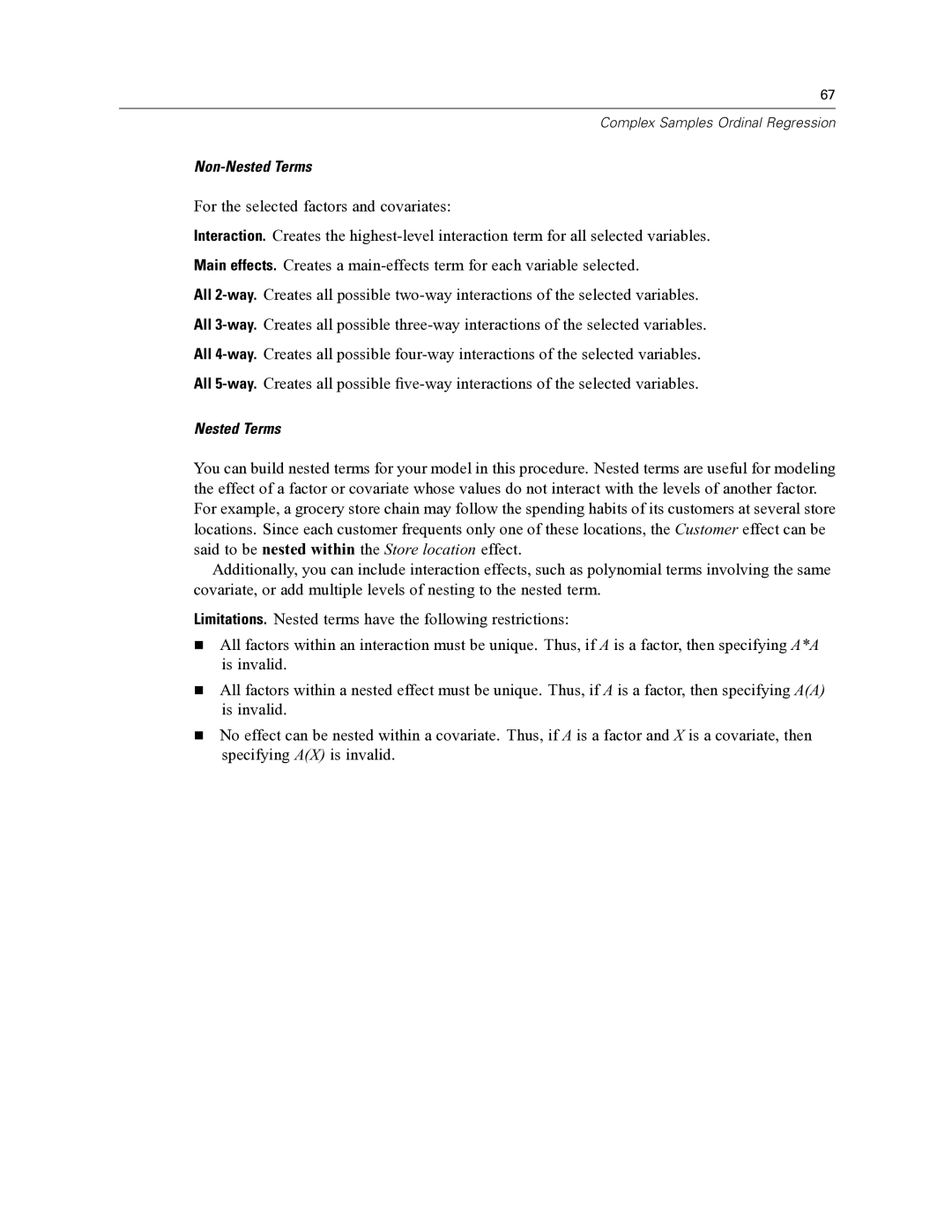67
Complex Samples Ordinal Regression
For the selected factors and covariates:
Interaction. Creates the
All
Nested Terms
You can build nested terms for your model in this procedure. Nested terms are useful for modeling the effect of a factor or covariate whose values do not interact with the levels of another factor. For example, a grocery store chain may follow the spending habits of its customers at several store locations. Since each customer frequents only one of these locations, the Customer effect can be said to be nested within the Store location effect.
Additionally, you can include interaction effects, such as polynomial terms involving the same covariate, or add multiple levels of nesting to the nested term.
Limitations. Nested terms have the following restrictions:
All factors within an interaction must be unique. Thus, if A is a factor, then specifying A*A is invalid.
All factors within a nested effect must be unique. Thus, if A is a factor, then specifying A(A) is invalid.
No effect can be nested within a covariate. Thus, if A is a factor and X is a covariate, then specifying A(X) is invalid.
